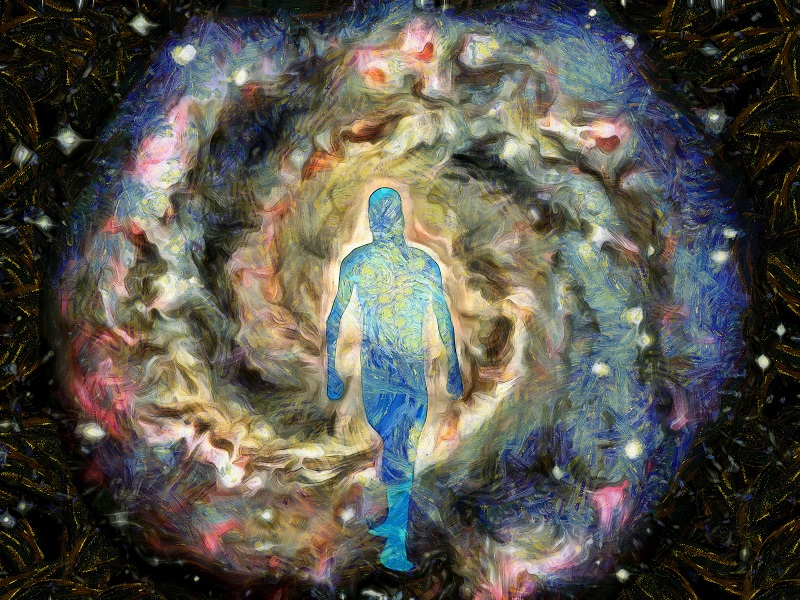Psychology
Bob Rich’s Self-Therapy Guide: Reincarnation
In this series, Dr. Bob Rich teaches you how to leave behind depression, anxiety, and other forms of suffering all too common in our crazy world. Recovering the Self published three sections of Bob Rich’s book From Depression to Contentment: A self-therapy guide in a series of posts – the first section ending with the quest for meaning and the second section concluding with The Development of Resilience.
The third section of Bob’s work was marked by special attention to various techniques and practices that are helpful in controlling depression. It concluded with a discussion on values and their implication in therapy. Bob now shares the final section of his self-therapy guide that delves deeper into the practical side of his therapy work illustrating with examples from individual cases of his own patients. In the 11th post in this section, Bob shared his greatest source of learning and the most important lessons in life. Now he is up for taking readers to the past life as he explores reincarnation.
Reincarnation
I will now demonstrate that reincarnation occurs. I will show that it is no more a matter of belief than, say, the adaptive value of sickle-cell anemia. For millions of people, me included, it is based on personal experience. As I’ve described in Ascending Spiral, in 2007 I recovered memories from five past lives. More recently, I exchanged hypnotic past life regression with a colleague in Scotland, via video conferencing. She recovered a couple of past lives, and so did I. However, going through the exercise, I heard a voice that was not a voice, but a thought that was not my thought: “It is only spending time.” This told me that the lives I recalled in 2007 were the only ones I needed to know, in order to do my work in this life.
Why is reincarnation a wonderful tool for achieving contentment?
Because it allows us to learn from experience, to progress in spiritual development, to gain from suffering. This is why I titled my story “ascending spiral.” We go up and down, forward and back, but over a lifetime, most people grow and improve in some ways. Extend that for many lives, with lessons from one life influencing others, and you have inevitable overall growth. I make sense of our world by considering us to be caterpillars feeding on the green leaves of experience, until at last we graduate into butterflies. That is the state of enlightenment, when we can get off the wheel of life. It is when we have learned all the Lessons we can learn, the final one being metta, the one from Jesus, of unconditional, universal love for all.
I’ll explore the implications for living after reviewing some of the evidence.
The evidence for reincarnation
Buddhist beliefs contain a genuine paradox about reincarnation. Because all is One, there is nothing separate that can be born again, that continues beyond death. In fact, the entire material universe, including human bodies, is an illusion, so also, there is nothing to reincarnate into. Several versions of Buddhism are very strident about this. At the same time, if you die with unresolved issues, you’re required to return into a new life in order to resolve them. Other Buddhist writings take this for granted.
In my essay, “Buddhism for Christians,” I describe the wave analogy that explains this. Do read it. Here, instead, I’ll look at the scientific evidence concerning reincarnation.
Can there be scientific evidence for such a concept?
Yes. First we need to examine what “scientific evidence” means.
There is no proof in science.
I have a hunch about something. To test this hunch, I try to DISPROVE it. I set up a way of gathering information that has a chance of showing my guess to be wrong. In science, this is called the null hypothesis.
If my procedures reject the null hypothesis, then my hunch is supported.
I am not perfect, and my preconceptions could have biased my results. So, there is need for others to be able to repeat my study, perhaps with some variations. If they agree with me, that’s cross-validation. My hunch is now a theory.
From that theory, we need to make further predictions, different from the original one. We try to disprove these too. If we can’t, then the theory is supported. This is “converging evidence.” The more unrelated, different lines of evidence support the theory, the stronger it is.
OK, on that basis, there is strong scientific support for reincarnation. Two examples below will meet the strictest standards. Another one is “hearsay:” people’s opinions, which is inherently not scientific evidence, but adds support to the other two. (This includes me telling you that I’ve had past life recalls, without objective, confirmable evidence. However strongly and honestly I believe what I say, it could be my imagination, or wishful thinking.)
Hypnotic past life regression
Check out the work of Peter Ramster:
Peter was a psychologist in Sydney, Australia, who found that some of his hypnotic subjects slipped into past lives (most hypnotists find this, me included). He did something new: got the person to make testable claims. For example, one woman felt herself to be a male medical student a long time ago, and drew the interior layout of the medical school in Glasgow, Scotland.
Peter got a research grant. He took four such clients to Europe to check each of the four claims.
They found that the Glasgow medical school building had an entirely different layout. But… a local historian had old blueprints of the building, before extensive renovations. They EXACTLY matched the drawings the woman had made in Sydney. No one had looked at those old blueprints for many years.
Two of the other three cases were also exact matches. The fourth had slight inaccuracies, but was substantially correct.
Given that in the hypnotic trance this lady felt being a man who had this knowledge, I can’t think of any other explanation than that she’d lived as a medical student in Glasgow, before the building’s renovation.
Children’s past life recalls
The best-known investigation into past lives is that of a team at the University of Virginia, that’s been examining testable “odd” claims by children under seven years of age since the 1950s. Check out their website.
Ian Stevenson was the first Director of the institute and wrote many books about their research. Given the skepticism of western culture regarding reincarnation, he and his colleagues were super-conservative in their conclusions, and meticulous with their research techniques. In 2002, he retired, and Jim Tucker took over his role. Jim’s personal website lists all their publications, and is a fascinating place to visit.
The technique is to seek out little children who know things they should have no way of knowing, or can do things they shouldn’t be able to. For example, consider a three year old boy who keeps saying he is Bobby Jones the golfer, has a fascination with golf although his family has zero interest in the sport, and as he grows, he becomes a junior champion with a string of 22 wins in junior golfing contests. This is one of the cases in Jim’s second book, Return to Life.
The investigators interview the family and get the child to make testable claims regarding which the family don’t have relevant knowledge. They then go looking for the evidence.
Jim’s first book, Life Before Life, is an absorbing read. When he wrote it, the team had 2500 cases in which, despite every attempt to explain the findings as being due to other causes, only one conclusion was possible: this child had lived a previous life.
As well as giving an overview of the research and its findings, Jim discusses 25 cases in detail. Some of these are reprints of articles in high reputation scholarly journals.
In preparation for writing this section, I lashed out and bought Jim’s second book, Return to Life. It is chattier, is in fact autobiographical, and is convincingly honest. When a case has doubtful features, he states them. It is less “scientific” and contains more speculation, perhaps because western culture has moved on and is more accepting of the possibility of reincarnation.
Chapter 4 is particularly convincing: a little boy with many verified memories of having been a pilot, shot down in the battle of Iwo Jima. I won’t repeat the details, but it is simply impossible to account for the story in any way apart from reincarnation. Similarly, Chapter 5 is a great detective story, in which we read the progression of the case, all Jim’s caveats and doubts — and the overall conclusion that little Ryan had to have been a person in Hollywood in the 1940s.
Return to Life is like a detective game. Jim presents evidence, and lets you draw your own conclusions about a case. He then discusses deeper issues: how are reincarnation and similar observations compatible with science? This part is 100% relevant to the reason I am covering reincarnation here. There is a side trip into an excellent common-language explanation of quantum physics, which I also find fascinating, and the detour is well worth it, even if physics is foreign country to you. Basically, modern physics demonstrates that the physical reality we feel around us is the creation of consciousness. This then makes sense of findings showing that there is an ongoing, nonmaterial part of a person that can move from life to life. The final conclusion is that all is One, and we apparent individuals are components of a Consciousness.
I thoroughly recommend reading either of these books.
Clinical death and out of body reports
One of my clients was a young woman who’d had many major operations. She told me that while anesthetized, she usually found herself looking at the hospital from outside. On occasion, she’d looked in through a window, watching them working on her body.
Another lady had died from pneumonia, but was revived. She has an unshakeable memory of sitting on a log near a creek in a forest clearing, with her long-dead grandfather comfortingly sitting beside her.
In the Preface to her book Ortho-Bionomy: A path to self-care, Luann Overmeyer gives a vivid, very believable account of dying in a motorbike accident. She saw her body in the ambulance while her consciousness was above the vehicle. While she hadn’t been able to see auras previously, now each person wore a glow. She watched from up near the ceiling as her body was left alone in a room. One nurse walked in — and looked up at Luann. She told her to go back into her body. Luann did, and lived to become an expert in a field of healing.
There are thousands of such accounts. The most beautiful is by Yvonne Rowan, which was her contribution to my book on cancer. She has given me permission to reproduce it. That’s for the next instalment.
– Dr. Bob Rich









